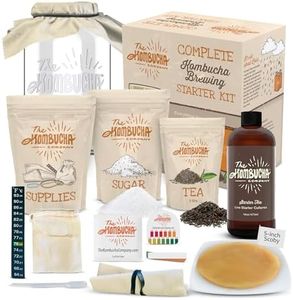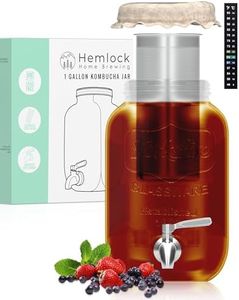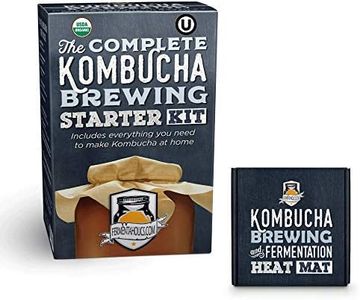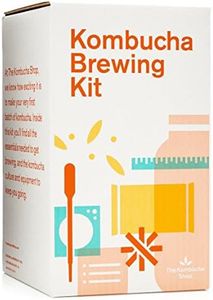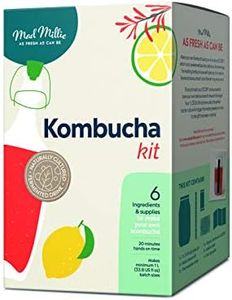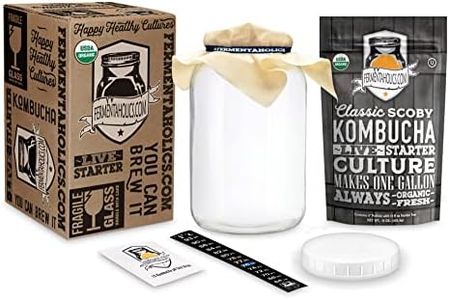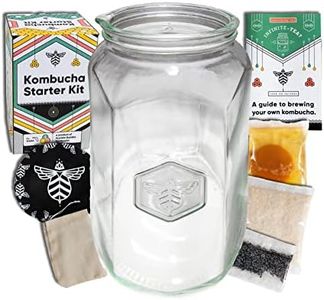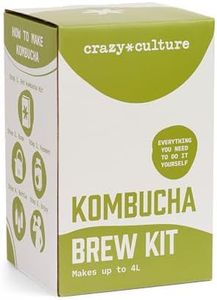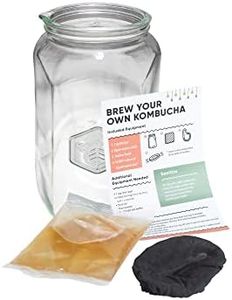We Use CookiesWe use cookies to enhance the security, performance,
functionality and for analytical and promotional activities. By continuing to browse this site you
are agreeing to our privacy policy
10 Best Kombucha Starter Kits
From leading brands and best sellers available on the web.Buying Guide for the Best Kombucha Starter Kits
Choosing a kombucha starter kit can make homemade brewing fun and easy, even if you’ve never tried before. The right kit will help you feel confident, avoid common mistakes, and enjoy delicious, safe kombucha at home. When selecting a starter kit, it’s important to look beyond just the packaging and price; focus instead on what’s included and how it matches your needs and comfort level. Pay attention to the key details—like the culture, size, and supplementary tools—because a good match will set you up for success from the very start.SCOBY Quality and SizeSCOBY stands for Symbiotic Culture Of Bacteria and Yeast, and it’s the living starter that ferments tea into kombucha. A healthy, mature SCOBY will make brewing easier and help guard against contamination. Kits typically include either a thick, large SCOBY or a smaller, thinner one. Thicker SCOBYs can speed up fermentation, while thinner ones might take longer but work just as well. Choose a kit with a SCOBY that's about 3 to 5 inches in diameter and comes with plenty of starter liquid; this is ideal for beginners and provides more reliable results.
Starter TeaStarter tea is the fermented liquid that comes with the SCOBY. It kicks off the fermentation and helps the new batch become acidic enough to prevent bad bacteria. Good-quality kits include at least a cup of strong, mature starter tea instead of just a small splash. Look for a kit that provides enough starter tea for your first batch, as a larger amount gives your brew a better head start and more consistent kombucha.
Brewing VesselThe vessel is where your kombucha ferments. Kits offer different types, commonly glass jars with various sizes, while some might include plastic containers. Glass is safest and doesn’t carry flavors or chemicals into your drink. Vessels can range from 1 quart to several gallons. A 1-gallon jar is a good starting point—it holds enough kombucha for personal use and keeps the process manageable, but smaller ones are great for limited spaces or small batches.
Included AccessoriesAccessories might include cloth covers, rubber bands, pH strips, thermometers, bottles, and funnels. Cloth covers prevent pests but allow air flow, pH strips help check acidity, while bottles are needed if you want to do a second ferment for fizziness. Consider what’s included and what you already have at home. If you want to keep the process simple, look for kits with all these items included; if you like experimenting, you might select a basic kit and pick up extras separately.
Instruction ClarityClear instructions can make the difference between easy success and brewing confusion. Some kits include detailed booklets or even online tutorials, while others provide only basic steps. If you’re new to kombucha, look for a kit with thorough, illustrated instructions to give you the confidence to brew safely and successfully, especially during the crucial first attempts.
